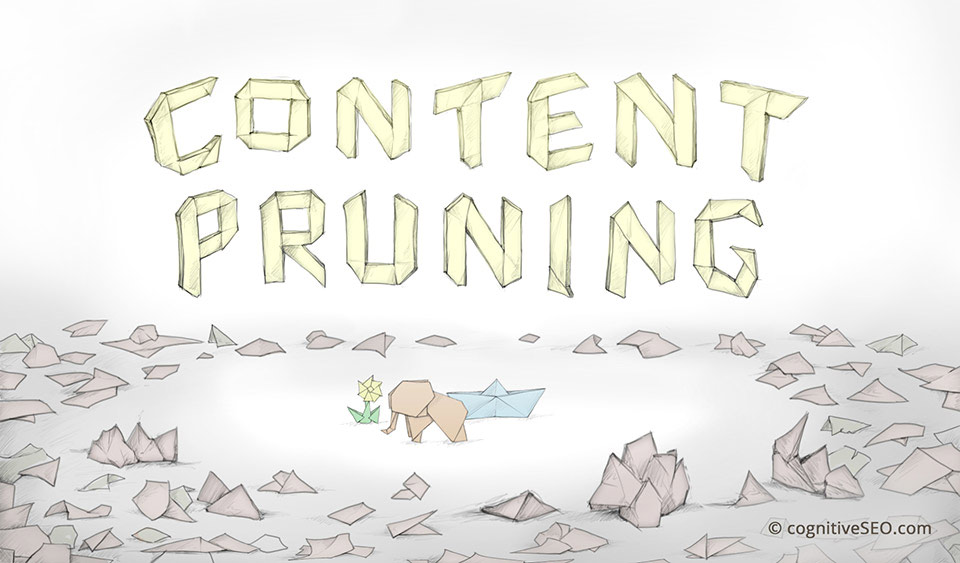Creating content for your website is an excellent way to provide value to your audience and engage them with your brand.
However, having too much content on your website can be overwhelming. And, it is essential to conduct a content audit to identify useful and obsolete content. Content pruning is the process of auditing your website content and removing unnecessary content.
In this blog, we’ll go through the steps of content pruning and provide you with some tips on how to audit your content effectively.
Step 1: Collect Your Content
The first step in the content pruning process is to create a list of all the pages on your website. You can export a list of URLs from your CMS, Google Analytics, or Search Console. After collecting the URLs, remove any duplicates to create your master list.
Step 2: Gather Your Data
The next step is to gather page-specific performance data from available sources. It includes Google Analytics, Google Search Console, Bing Webmaster Tools, your content management system, Google search operators, and paid tools. You can collect data on:
- All traffic: visits, unique pageviews, bounce rate, exit rate, conversions, page value
- Organic traffic: filter the All Traffic report to show only organic traffic by applying an Organic Traffic segment
- External links: links pointing to your domain from another website
- Internal links: links within your website that are linking to other pages on your website
- Search results: impressions, clicks, click-through-rate (CTR), and average position in the Google search results for each URL
- Backlinks: how many other domains are pointing to your website
- Publish date: when the post was originally published
- Last updated: when the post was last updated
- Word count: the number of words per page
- Indexed content: a list of URLs that Google has indexed for your site
- Dated references & content: content on your website that has specific years listed in the body of the page copy.
Step 3: Conduct A Content Audit
The next step in the content pruning process is to use the data you have gathered and evaluate how your content is performing.
You can use Excel, Google Sheets, R, Power BI, or any other data tool of your choice.
Match each URL with the corresponding data points and evaluate each metric on a page-by-page basis, compared to the overall performance of your website.
Your content auditing document should help you identify opportunities for what to do with each page of your site.
You can use a color scale to represent the evaluation of data points on a page-by-page basis.
Green can represent excellent performance, yellow for mediocre performance, and red for poor performance.
You can take the following actions based on the audit results:
- Keep the high-performing content as it is.
- Update the mediocre content to make it more engaging and useful.
- Merge the low-performing content with similar content on your website.
- Remove the obsolete content that adds no value to your audience.
Step 4: Backup, Rollout & Monitor
Create A Backup
It is always a good idea to create a backup before making any changes to your website or content. So, you can easily restore your website and content to its previous state at anytime you want.
Prioritize Repurposed Content
When repurposing content, you’ll want to prioritize your efforts by sorting URLs based on the ease of updating the material and the potential impact on your website’s performance.
For example, you might start with pages that require minor updates and have the potential to significantly improve your website’s traffic or engagement.
Slowly Rollout Changes
If your website is on the larger side and you’re planning to remove pages, consider a slower rollout of changes. For example, you could start by removing a portion of the pages and then monitor your website’s performance before continuing to eliminate additional pages.
Monitor Changes
As with any major changes to your website, it’s important to monitor the impact of the changes you’ve made.
Keep an eye on metrics like website traffic, engagement, and conversion rates. This ensures that your changes are positively impacting your website’s performance.
If you notice any negative effects, be prepared to make adjustments to your plan accordingly.
What Is The Recommended Frequency For Content Pruning?
Now, the question is, how often should you prune your content? Well, it really depends on the quality of your website’s content and how frequently it’s updated.
It’s a good idea to prune your content into your SEO and content strategy at least once a year.
This means going through your website’s content and removing any outdated, irrelevant, or low-quality content that’s not adding value to your site.
However, if you have a website with content that’s regularly updated, such as a news site or a blog, you may want to consider pruning your content on a more frequent basis.
In this case, a bi-annual or even a quarterly content pruning schedule might be more appropriate to ensure your content stays fresh and relevant.
Read More- Why Responsive Website Design Is A Must For Your SEO Campaign?

